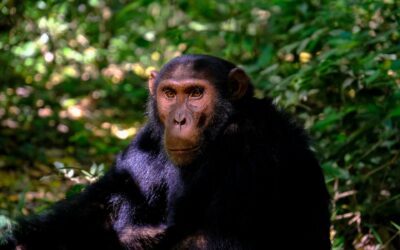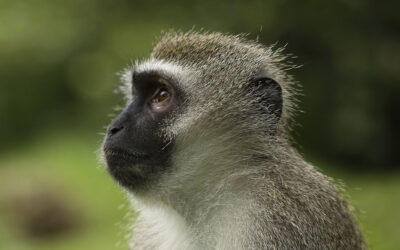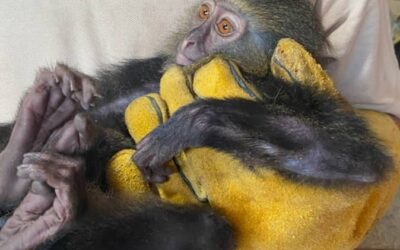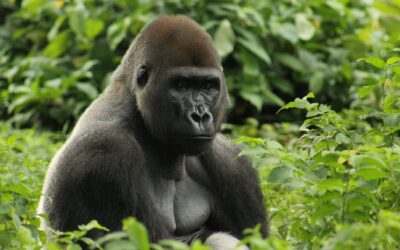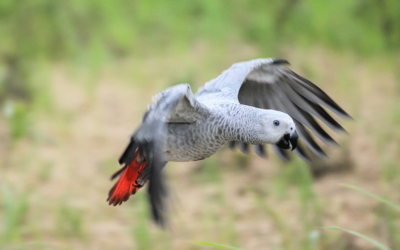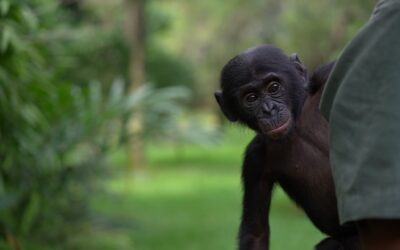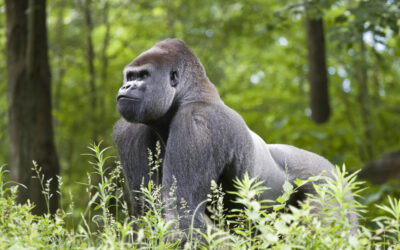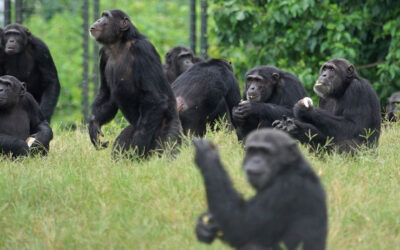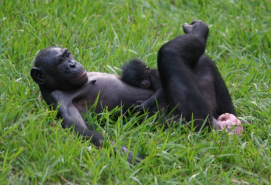Celebrate the Unknown Great Ape on World Bonobo Day!
Our closest relatives desperately need you to save them from extinction. There may only be 15,000 left.
By Natasha Tworoski
Finally! A reason for everyone, single or not, to celebrate February 14th! 2017 will mark the very first annual World Bonobo Day, spreading love of this rare great ape to all.
In 2015, conservationist Ashley Stone founded The Bonobo Project, a non-profit dedicated to raising awareness about bonobos while also aiding in the conservation of this incredible species. Already a platform for uniting bonobo conservationists, rescuers and admirers worldwide, The Bonobo Project is also responsible for creating this new reason to celebrate an amazing species.
It can be hard to gain momentum in the effort to protect bonobos from extinction. Why? Because the first question you usually get is, “What is a bonobo?” This great ape species is found only in the Democratic Republic of Congo and diverged from chimpanzees about 2 million years ago. This means the bonobo is also our closest relative, just like the chimpanzee. Also like the chimpanzee, they are an endangered species and their numbers are decreasing.
It’s estimated that there are fewer than 50,000 bonobos left, and possibly as few as 15,000.
PASA has joined The Bonobo Project to bring conservation organizations together and celebrate the first World Bonobo Day. We have committed to raising $2,000 as part of the crowdfunding campaign for World Bonobo Day – but we can only do it with your help.
The bonobos need your help. If we don’t all contribute, this amazing species may soon disappear forever.
Please click here to help us reach our goal of raising $2,000 before February 14!
Bonobos who have been confiscated from the black market bushmeat and illicit pet trade have one place to go: PASA member Lola ya Bonobo. No other sanctuary in the world is able to rescue orphaned bonobos! Founded in 1994 during a violent civil war in the Democratic Republic of Congo, Lola ya Bonobo has successfully reintroduced bonobos back to the wild on a protected reserve in northern DRC and they are currently preparing to do it again early in 2017!
Sadly, some of the bonobos they rescue are too traumatized from the terror of being taken away from their family at such a young age and do not develop all the skills needed to survive in the wild. For those individuals, they will always have a safe home living among other bonobos across Lola ya Bonobo’s 75 acres of forests, where diligent caretakers make sure they always have what they need.
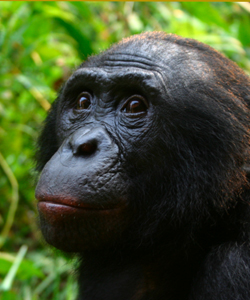
Along with chimpanzees, bonobos are our closest relatives in the primate world. And like chimpanzees, they face the threat of extinction.
Bonobos like this youngster rescued from the black market bushmeat and illicit pet trade come to Lola ya Bonobo Sanctuary orphaned and often traumatized.
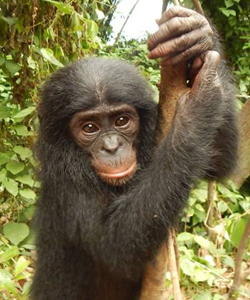
Next Posts
PASA and the QATO Foundation Partner to Protect Chimpanzees in DRC
PASA and its member J.A.C.K. Sanctuary partner with the QATO Foundation to create a bold new island sanctuary for up to 120 rescued chimpanzees in the DRC.
Trophy Hunting Myths Debunked
NGOs tackle misinformation about trophy hunting spread by the hunting lobby.
Largest Seizure of Monkeys in Africa Welcomed to J.A.C.K. Sanctuary in the Democratic Republic of Congo
Trafficking of African primates from Africa to Asia was thwarted with confiscated animals repatriated and sent to an accredited PASA member sanctuary.
5 Ways to Help Save Gorillas
Anyone can have an impact on gorilla conservation through simple actions.
Celebrate World Parrot Day with PASA!
This World Parrot Day, we are celebrating four of our amazing member sanctuaries that offer a second chance to rescued parrots!
What is an Endangered Species?
This article explains what it means to be “endangered” and explores how human activities can threaten species. It also highlights how Pan African Sanctuary Alliance (PASA) member centers rescue, rehabilitate, and conserve endangered primates and their habitats.
Celebrate 23 Years of PASA in 2023
PASA turns 23! It’s 2023 and we’re asking you to help us celebrate our 23 member sanctuaries and our 23 years of protecting primates. To mark this day, we are launching our Primates Forever Campaign to ensure magnificent great apes and monkeys remain wild and protected.
Viruses in Sanctuary Chimpanzees Across Africa
New research finds that sanctuary chimpanzees are infected with viruses previously found in wild chimpanzees. Additionally, it suggests that, like in the wild, sanctuaries experience reverse zoonotic respiratory virus transmission.
Women in Conservation: Two Wildlife Heroes in West Africa
This International Women’s Day, celebrate the dedication and achievements of two women working to protect wildlife and inspire the next generation in West Africa.
Rewilding Bonobos: 14 Bonobos Return to the Wild
After years of planning and preparation, 14 bonobos are back where they belong in the lush rainforest of equatorial Africa!

